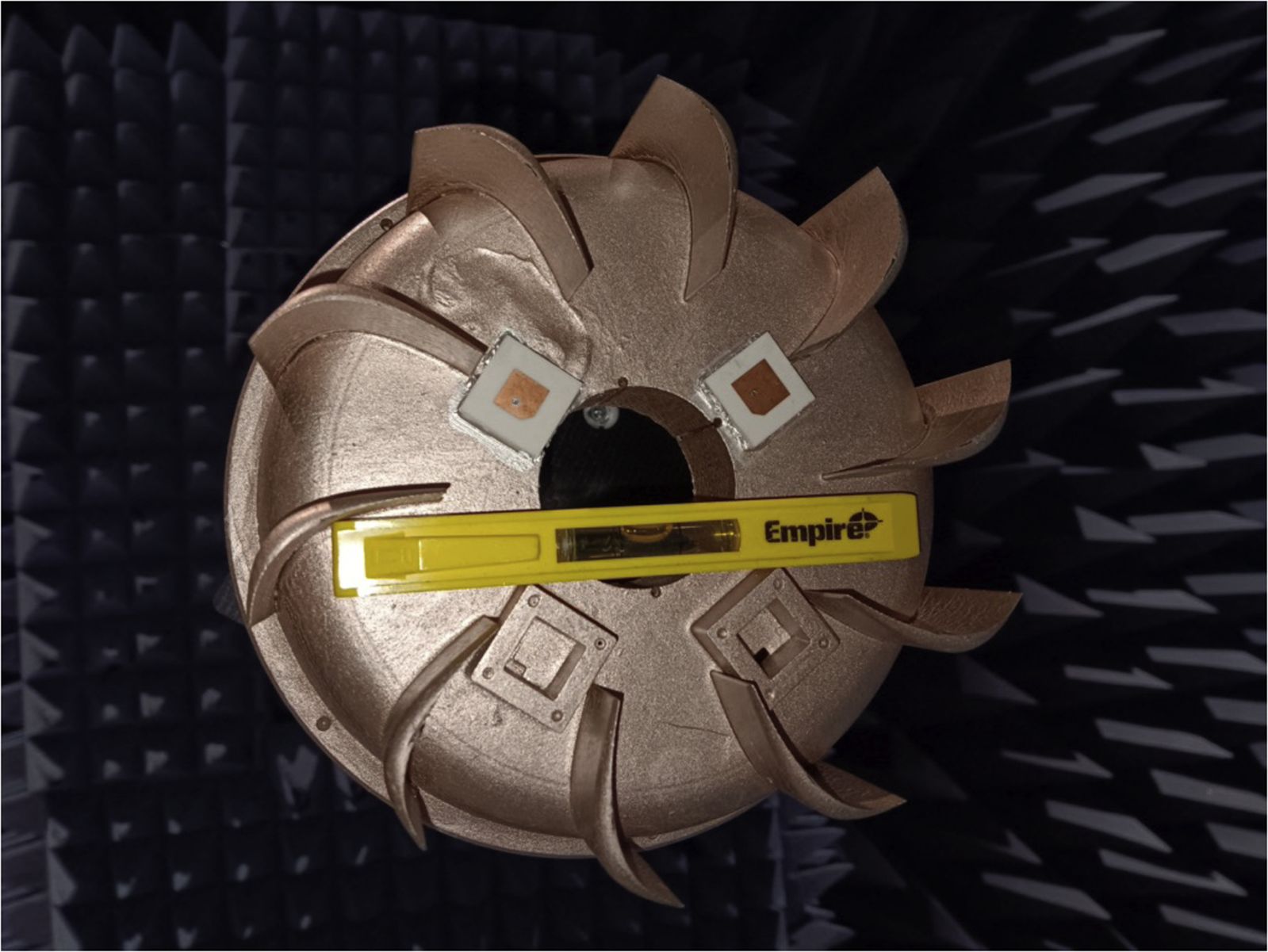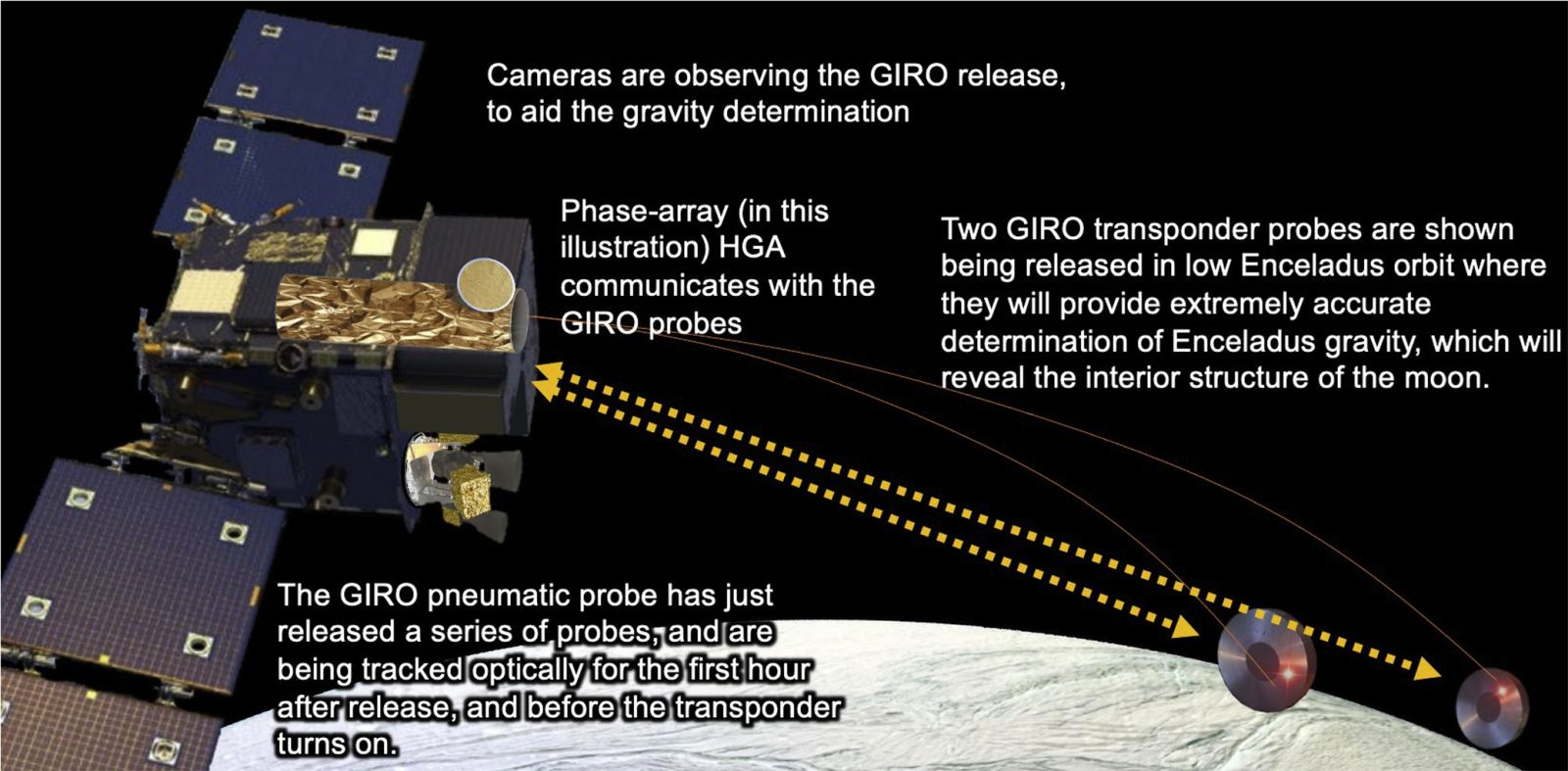🛰️ GIRO: this instrument could map the interior of any extraterrestrial object
Follow us on Google News (click on ☆)

The prototype of the GIRO probe, 3D-printed in resin and coated with conductive paint to emulate the performance of the flight version, which will be printed in aluminum. Two patch antennas are visible. The yellow instrument is a level used to calibrate the antenna test geometry.
The Gravity Imaging Radio Observer, or GIRO, relies on a well-known principle in physics: the Doppler effect. By analyzing tiny shifts in the radio signals it emits and receives, the instrument can detect gravitational irregularities. These irregularities provide insights into the distribution of mass deep within celestial bodies, potentially revealing dense cores, cavities, or even underground oceans.
This type of observation opens new possibilities for studying planets without the need for landing or drilling their surfaces.
Thanks to its compact size and high sensitivity, GIRO could be sent to a wide variety of objects: asteroids, icy moons, gas giants. One of its potential targets is the still poorly understood region of Uranus' rings, where few probes have ventured so far.
Despite its advantages, GIRO faces several challenges. Its energy consumption, for instance, limits its operation to about ten days in the most remote environments. Orbit planning to obtain useful measurements is also a key factor in its implementation.

Conceptual depiction of two GIRO probes deployed on Enceladus, showing the deployment system, the bidirectional radio link with the high-gain antenna (HGA), and the observation cameras that will use each probe's lights to enhance gravitational signature extraction.
Initial tests in controlled environments are expected soon. If the results are conclusive, integration into an actual mission could occur within one to three years. Until then, engineers are refining the prototypes to ensure their durability and autonomy.
How does the Doppler effect work in astronomy?
The Doppler effect refers to the change in frequency of a wave (sound or electromagnetic) when the source and observer are in relative motion. In space, it is used to measure the speeds of stars, galaxies, or even detect exoplanets.
In GIRO's case, the radio signals emitted by the probe are sensitive to the slightest variation in the gravitational field encountered. The detected frequency shifts then reveal details about the internal structure of the observed body.
This principle is also used in other fields, such as medicine (Doppler ultrasound) and meteorology (weather radars), proving its effectiveness and versatility.
What is gravitational mapping?
Gravitational mapping involves measuring local gravity differences to deduce the internal distribution of matter in a celestial object. The denser an area, the stronger its gravitational pull.
This method can, for example, detect density variations in planetary crusts or estimate the composition of a core. It is particularly useful for inaccessible worlds, such as those covered in ice.
The data obtained helps reconstruct the geological history of planets and identify interesting targets for future robotic or human missions.